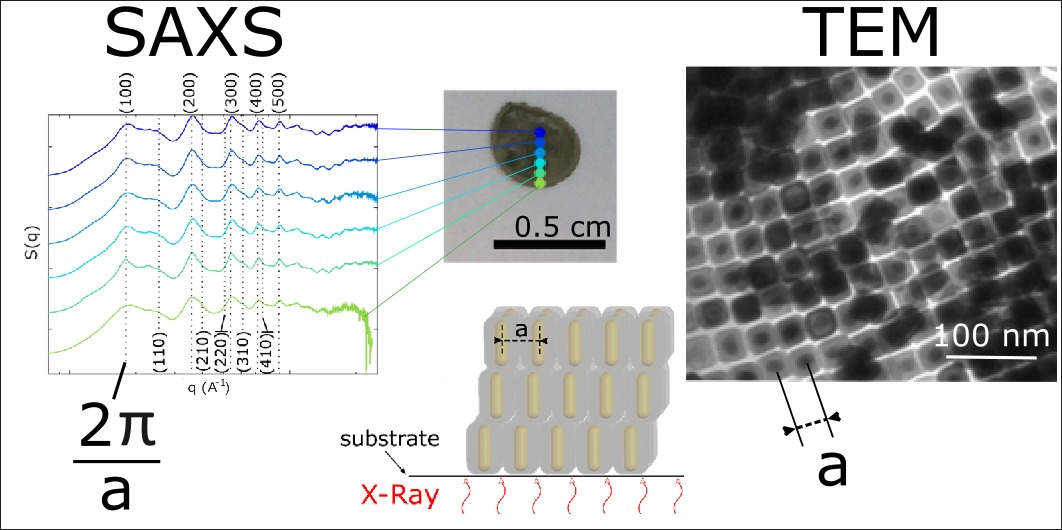Multiscale deposition of noble metal nanoparticles
| 2018-09-27 |
Building nanoscale devices is a crucial step towards the success of nanotechnologies. The assembly of colloidal nanoparticles is a technology in development that may outperform standard lithography techniques in the future. Three-dimensional materials with possibly sub-nanometric inter-distances would be easily manufactured this way. Many groups work towards this goal, but some challenges still need to be addressed, such as the propagation of the order to large length scales. In this work, we demonstrate the organization of anisotropic nanoparticles with controlled local order, which spans the whole sample area.

Two complementary techniques (SAXS and TEM) are used to characterize assemblies of Au/Ag heterostructures. In SAXS, the spot size is macroscopic, about 500×200 µm², while in TEM the characterization is made locally, over hundreds of nanometers. The nanoparticles are pointing toward us in the TEM image, organized here in a square in-plane arrangement that can be modulated according to their cross-section.
In this work we used hybrid Au/Ag particles due to their fascinating optical properties. These nanoobjects consist of gold nanorods encased in silver shells with a thickness that can be controlled from a few atomic layers to tens of nanometers. The section of the nanoparticle, initially octagonal, becomes square for a sufficiently thick silver shell. We aimed at studying the impact of the morphological changes of the building blocks on their assembly into superlattices. Usually, nanoparticle assemblies are characterized locally by transmission electronic microscopy (TEM) and give only a limited picture of the assembly on a larger scale. In addition, we used Small Angle X-Ray Scattering (SAXS) to scan the sample area with a probe having much larger dimensions than the nanoparticles. This structural study shows that the nanorods are oriented in the same direction over the whole sample area, thanks to a well-chosen surface chemistry. Furthermore, hexagonal or square phases were formed depending on the octagonal or square cross section of the nanoparticles respectively, demonstrating a control of the multi-scale organization in the system.
Reference: C. Hamon, C. Goldmann and D. Constantin, Nanoscale, 2018, DOI: 10.1039/C8NR06376A.